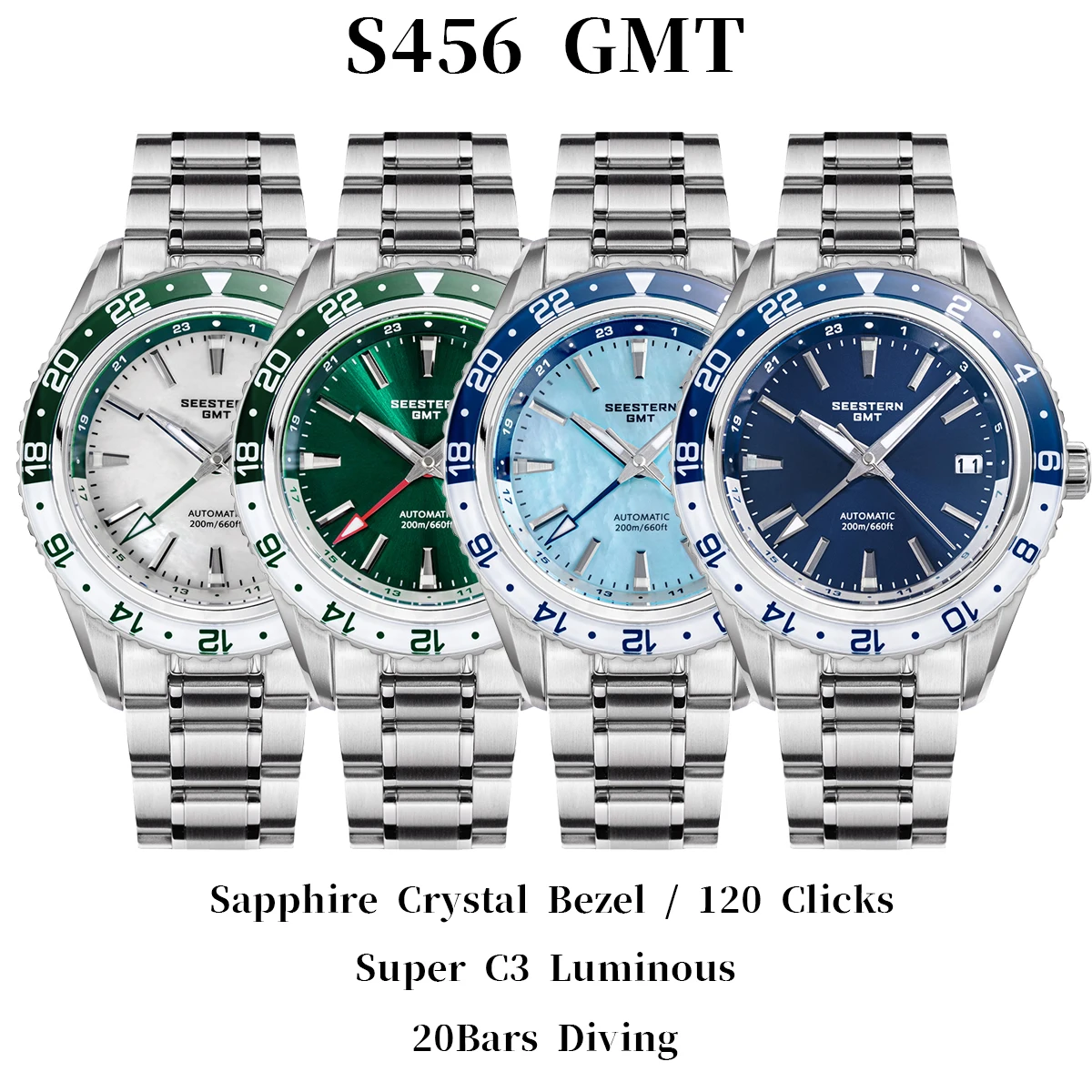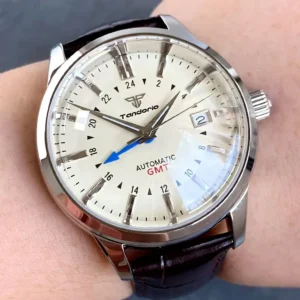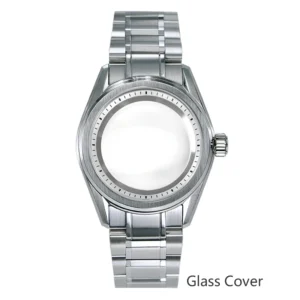What is GMT and Why Does It Matter for Dive Watch Users?
Greenwich Mean Time (GMT) originated as the international standard for timekeeping, based on the mean solar time at the Royal Observatory in Greenwich, London. Today, this standard has evolved into Coordinated Universal Time (UTC), though many still use the term GMT in everyday contexts, especially in the watch world.
The concept of GMT dates back to 1884 when the International Meridian Conference established Greenwich as the prime meridian (0° longitude), creating a global reference point for time. This standardization revolutionized navigation, international commerce, and eventually global communications.
For dive watch enthusiasts, understanding GMT functionality in dive watches provides practical benefits that extend beyond typical timekeeping. When diving internationally, tracking multiple time zones becomes essential for coordinating with local dive operations while staying connected to home time.
Imagine preparing for a dawn dive in Bali while needing to check in with family back in New York—a GMT dive watch lets you monitor both times simultaneously without mental calculations. The complete guide to multi-timezone watches reveals how these timepieces have evolved to serve global travelers who venture beneath the waves.
Professional divers working with international teams particularly benefit from GMT functions when synchronizing dive operations across different regions. Whether it’s monitoring decompression schedules while keeping track of check-in times with surface support or coordinating with dive teams in different time zones, a GMT dive watch serves as a practical tool beyond its sophisticated appearance.
The Technical Basics: How GMT Works on Watches
A GMT watch contains several distinctive elements that work together to display multiple time zones simultaneously:
- Additional GMT hand: A fourth hand (beyond hour, minute, and seconds) that completes one rotation every 24 hours
- 24-hour scale: Either on the dial or bezel, allowing the GMT hand to indicate time in a 24-hour format
- Independent setting mechanism: Allows adjustment of the GMT hand separately from the main time display
The fundamental difference between the main hour hand and GMT hand is their rotation period. While the standard hour hand makes two complete rotations per day (12-hour format), the GMT hand completes just one rotation every 24 hours. This 24-hour rotation eliminates any confusion between AM and PM when reading the second time zone.
Watch manufacturers implement GMT functions through different movement types:
“True GMT” (also called “traveler’s GMT”): The local hour hand can be independently adjusted in one-hour jumps without stopping the movement—ideal for travelers changing time zones frequently.
“Caller GMT” (also called “office GMT”): The GMT hand can be independently set, while changing local time requires stopping the entire movement—better for those who stay in one time zone but track a distant one.
Reading a GMT watch is straightforward once you understand the basics. The main hands show local time in traditional 12-hour format, while the GMT hand points to the corresponding hour on the 24-hour scale, displaying your second chosen time zone.
For a comprehensive understanding of how these mechanisms function in dive watches specifically, exploring GMT complications in dive watches can provide valuable insights. Watch enthusiasts interested in these sophisticated timepieces might want to browse various GMT automatic watch options to see these mechanisms in action.
Dive Watch Essentials: Core Features and Their Purpose
A proper dive watch must meet specific standards to ensure reliability and safety underwater:
- Water resistance: Minimum 200m/660ft for recreational diving, with professional models often rated to 300m/1000ft or more
- Unidirectional rotating bezel: Allows divers to track elapsed time underwater; rotates only counterclockwise as a safety feature
- Luminosity: Bright, long-lasting luminous material on hands, hour markers, and zero marker on bezel for visibility in dark underwater conditions
- Legibility: High-contrast dial design with clear, bold markings for quick reading in challenging conditions
- Durability: Robust construction with corrosion-resistant materials able to withstand pressure and saltwater exposure
The unidirectional bezel stands as perhaps the most critical safety feature. If accidentally bumped during a dive, it can only move in a direction that shows less remaining time—never more—preventing potentially dangerous miscalculations of available air supply.
For certification as a true dive watch under ISO 6425 standards, a timepiece must undergo rigorous testing including water resistance validation, condensation resistance, and shock resistance. The standards also mandate specific legibility requirements both in darkness and at a 30cm distance.
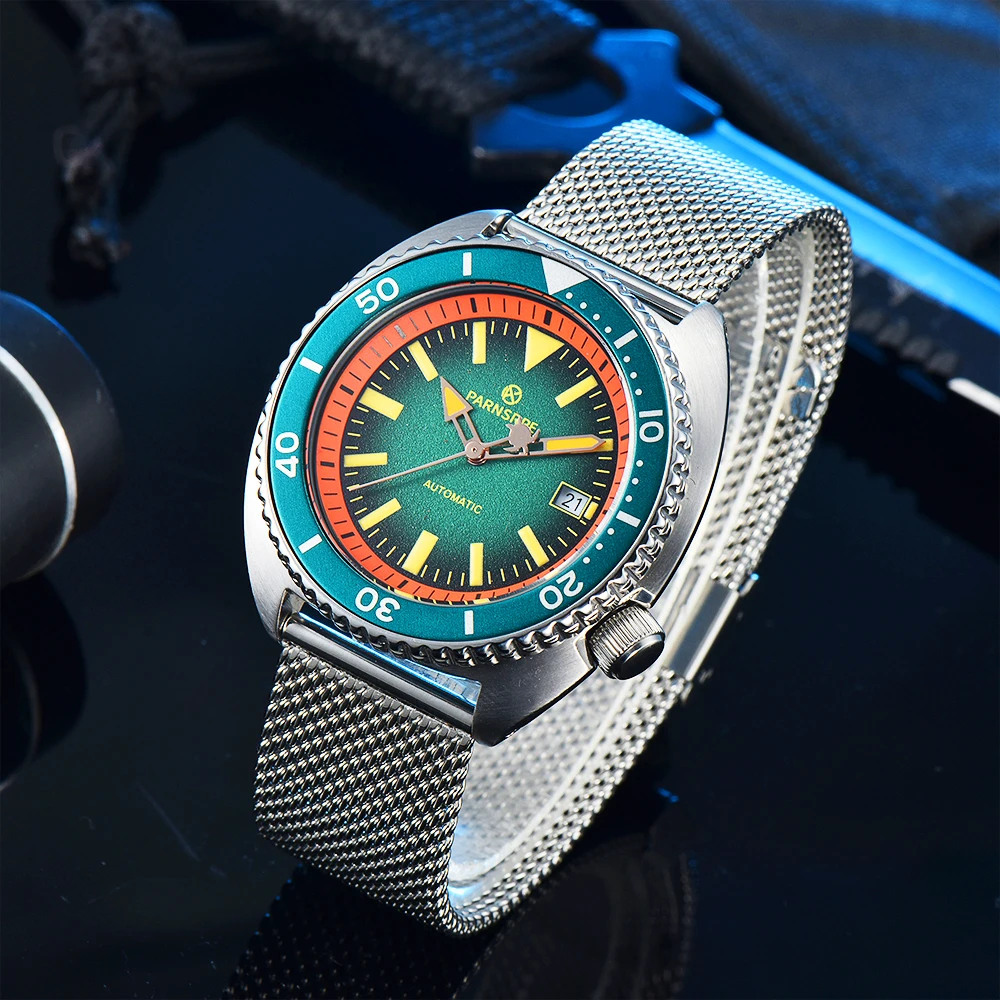
Dive watches have evolved from essential tools to stylish accessories, but serious divers still rely on their core functionality. While many dive computer users keep a traditional dive watch as a reliable backup, these timepieces remain indispensable for professional underwater work. For those seeking reliable underwater timekeeping, our collection of automatic dive watches offers proven performance, while professional specification dive watches provide advanced features for more demanding conditions.
Integrating GMT into Dive Watches: Design Solutions
Incorporating GMT functionality into a dive watch presents unique design challenges. Manufacturers must maintain essential dive timing capabilities while adding timezone tracking without compromising water resistance or readability. Several design approaches have emerged to address this challenge:
External GMT Bezels
Some manufacturers replace the traditional unidirectional dive timing bezel with a bidirectional 24-hour GMT bezel. While this solution elegantly tracks a second time zone, it eliminates the dedicated dive timing function. Divers using these watches must rely on digital dive computers or separate timing devices for underwater timing.
Dual-Purpose Bezels
More innovative designs feature hybrid bezels with both minute markings (for dive timing) and 24-hour markings (for GMT tracking). These typically maintain unidirectional rotation for safety but can be more difficult to read due to the density of information.
Internal Rotating 24-Hour Rings
Some models preserve the external dive timing bezel while adding an internal 24-hour ring controlled by a separate crown. This elegant solution maintains all dive functionality while adding GMT capability, though it increases case thickness and adds another potential water entry point.
Fixed 24-Hour Scales
The simplest approach places a fixed 24-hour scale on the dial perimeter or chapter ring, leaving the external bezel dedicated to dive timing. While this preserves dive functionality, it limits GMT tracking to just one additional time zone.
Understanding what makes a dive watch GMT compatible involves appreciating these design compromises. Each solution offers different advantages depending on your priority—pure dive functionality, timezone tracking, or a balanced compromise between the two. For specialized timepieces combining these functions, exploring a collection of GMT dive watches can provide inspiration for finding the perfect blend of features.
GMT Bezel vs. Dive Bezel: Understanding the Crucial Differences
The functional differences between GMT and dive bezels are critical for both proper use and safety:
| Feature | GMT Bezel | Dive Bezel |
|---|---|---|
| Scale | 24-hour markings | 60-minute markings |
| Rotation | Bidirectional | Unidirectional (counterclockwise only) |
| Primary Function | Tracking additional time zones | Measuring elapsed dive time |
| Safety Feature | None specific | Prevents accidental extension of dive time |
| Typical Appearance | Often two-tone (day/night indicator) | High contrast with prominent numerals |
The GMT bezel’s bidirectional rotation allows quick adjustments when tracking different time zones. However, this design would be hazardous for dive timing—if bumped, a bidirectional bezel could rotate clockwise, incorrectly showing less elapsed time underwater. This seemingly small difference could lead a diver to miscalculate remaining air supply with potentially serious consequences.
Visually, GMT bezels typically feature 24 equal divisions with day/night color differentiation (often blue and red), while dive bezels focus on clear minute markings with emphasis on the first 15-20 minutes where critical decompression monitoring occurs.
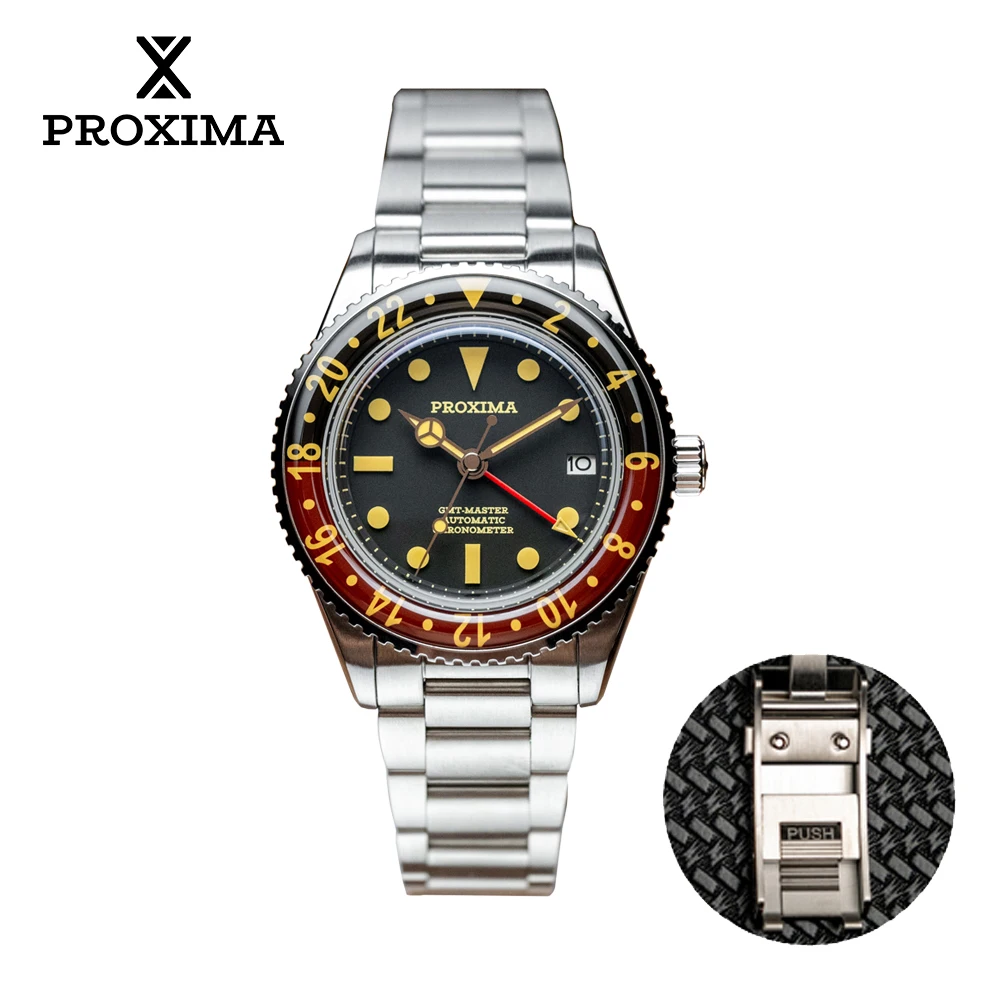
Some manufacturers have attempted hybrid designs that compromise between both functions—with varying success. These typically use color coding, different sized markings, or dual scales to serve both purposes, though purists often prefer dedicated functionality for serious diving.
For those interested in the mechanical distinctions, our detailed comparison of GMT vs. dive watch functionality provides deeper insights. The evolution of dive watch technology shows how these specialized bezels have developed over decades to serve increasingly specific needs among underwater enthusiasts.
Practical Applications: How Divers Use GMT Functions
Dive watches with GMT functionality serve practical purposes for traveling divers and professionals alike:
International Dive Trip Planning
When traveling across time zones for diving expeditions, tracking home time becomes essential. Divers can maintain awareness of appropriate times to contact family or handle business matters back home while fully immersed in local dive schedules. This proves especially valuable when diving in remote locations with significant time differences.
Coordinating with International Dive Operations
Professional dive teams often coordinate with surface support or other dive groups operating in different time zones. A GMT dive watch allows instant reference to operational times without confusion, ensuring smooth communication between international teams during complex underwater missions.
Creative Use for Surface Intervals
Between dives, the GMT function can serve a secondary purpose by helping track surface interval times while simultaneously monitoring local and home time. Though not its primary purpose, experienced divers have found this dual-use valuable during multi-dive days.
Example Scenario: Maldives Diving Expedition
Consider a diver from New York (UTC-5) on a liveaboard in the Maldives (UTC+5). With a 10-hour time difference, dawn dives at 6:00 AM local time occur during 8:00 PM New York time. The GMT function allows the diver to:
1. Set the main hands to Maldives time for all diving activities
2. Set the GMT hand to New York time to know when family is available
3. Avoid disturbing sleeping family members with ill-timed satellite phone calls
The practical applications and use cases for GMT dive watches continue to expand as more divers discover the advantages of GMT function in divers beyond simple convenience. This combination of features proves especially valuable for frequent travelers who pursue underwater adventures across multiple time zones.
Reading and Setting a GMT Dive Watch: Step-by-Step Guide
Setting up your GMT dive watch properly ensures accurate timekeeping across time zones. The process varies slightly depending on your watch’s movement type:
For “Caller GMT” Movements:
1. Unscrew the crown (if applicable) and pull it to the second position
2. Set the main hour and minute hands to your current local time
3. Pull the crown to the third position (if available) to set the GMT hand to your second time zone
4. Push the crown back and screw down tightly to maintain water resistance
For “True GMT” Movements:
1. Unscrew the crown and pull to the second position
2. Set the GMT hand to your home/reference time using the 24-hour scale
3. Push crown to first position and adjust the hour hand in one-hour jumps to match local time
4. Return crown to locked position and verify water resistance
Reading Both Time Zones:
– Local time: Read normally from main hour and minute hands
– Second time zone: Locate where the GMT hand points on the 24-hour scale
Tracking a Third Time Zone:
Some GMT dive watches with rotating 24-hour bezels can track a third time zone:
1. Calculate the hour difference between your second and third time zones
2. Rotate the bezel that many clicks clockwise (if third zone is behind) or counterclockwise (if ahead)
3. Read the third time zone where the GMT hand points on the rotated bezel
Understanding different GMT dive watch layouts helps master these functions quickly. With practice, reading multiple time zones becomes second nature, allowing you to focus on your underwater adventures without confusion about time differences.
Buying Guide: What to Look for in a GMT Dive Watch
When selecting a GMT dive watch, several factors deserve careful consideration:
Movement Type and Quality
– “True GMT” movements offer more convenient time zone adjustments for frequent travelers
– “Caller GMT” movements typically come at lower price points while still providing dual time zone functionality
– Consider power reserve duration for automatic movements—longer reserves prove convenient during travel
Water Resistance and Dive Specifications
– Minimum 200m/660ft water resistance for recreational diving
– Helium escape valve for saturation diving (professional use)
– Ensure the watch meets ISO 6425 standards for true dive functionality
Bezel Design and Function
– Decide whether dive timing or GMT functionality takes priority
– Consider hybrid designs if you need both functions
– Evaluate bezel grip pattern and action—it should rotate precisely without being too loose or stiff
Legibility and Luminosity
– High-contrast dial with distinct separation between GMT and standard hands
– Powerful luminous material on hands, hour markers, and bezel markings
– Clear differentiation between day/night on 24-hour scales
Size and Comfort
– Case diameter typically between 40-44mm for most wrists
– Consider thickness—GMT complications often add bulk
– Bracelet or strap should be secure and comfortable with wetsuit extensions if needed
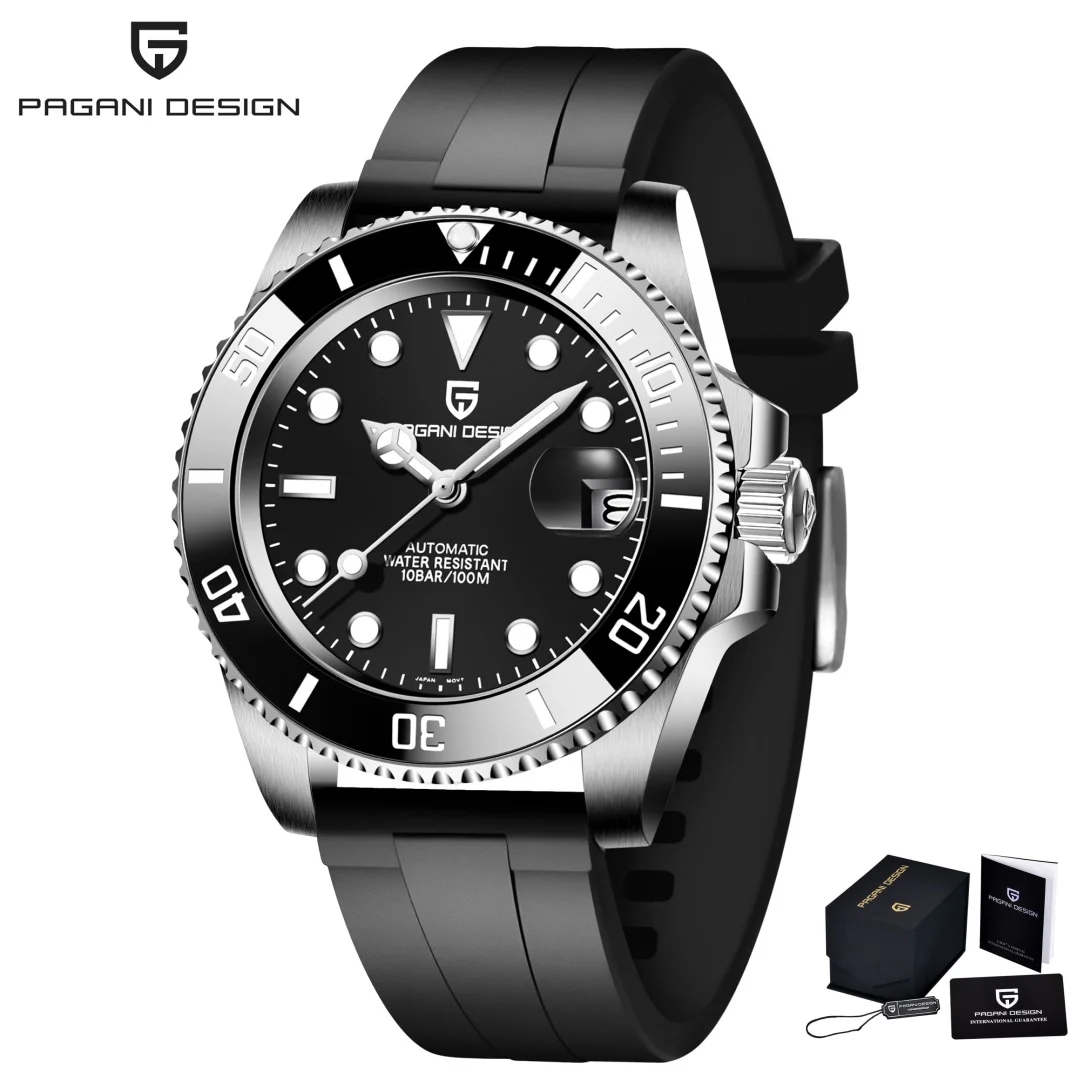
Classic Automatic Dress Watches, GMT Automatic Watches, GMT Pilot Watches
Price range: $1,240.86 through $1,463.33 Select options This product has multiple variants. The options may be chosen on the product pageAutomatic Chronograph Watches, Classic Style Dive Watches
$3,053.06 Select options This product has multiple variants. The options may be chosen on the product pageBronze Automatic Watches, Military Inspired Automatic Watches, Professional Spec Dive Watches
Price range: $1,442.21 through $1,442.82 Select options This product has multiple variants. The options may be chosen on the product pageProfessional Spec Dive Watches, Titanium Automatic Watches
$574.74 Select options This product has multiple variants. The options may be chosen on the product pageClassic Automatic Dress Watches, GMT Automatic Watches, GMT Dive Watches
Price range: $468.93 through $552.94 Select options This product has multiple variants. The options may be chosen on the product pageGMT Automatic Watches, Unique Automatic Watches
$420.10 Select options This product has multiple variants. The options may be chosen on the product page
For those appreciating traditional aesthetics with modern functionality, our classic styled dive watches offer timeless appeal. To understand the differences between similar complications, exploring the relationship between GMT and world time watch functionality can help clarify which best suits your needs.
Supplemental Content: When GMT Function Isn’t Suitable for Diving
Q: Are there situations where a GMT dive watch might not be ideal?
For technical diving involving complex decompression schedules, dedicated dive computers provide more comprehensive information than any mechanical watch. When precise timing of multiple depth stages is critical, the simplicity of a standard dive watch or the advanced functionality of a dive computer may be preferable to the potentially confusing additional GMT hand.
Q: What alternatives exist for divers needing both functions?
Some professional divers opt to wear two separate watches—a dedicated dive watch for underwater timing and a GMT watch for time zone tracking. While less elegant, this solution eliminates any functional compromises and provides redundancy for critical dive timing.
The question of whether a GMT watch is suitable for diving depends largely on your specific diving activities and requirements.
Can a GMT Bezel Be Used for Dive Timing in an Emergency?
While technically possible, using a bidirectional GMT bezel for dive timing presents significant safety concerns. The bidirectional rotation means the bezel could inadvertently rotate clockwise during a dive, incorrectly showing less elapsed time—potentially leading to dangerous air supply miscalculations.
In a genuine emergency where no alternatives exist, a GMT bezel could be used with extreme caution by:
- Setting the zero mark to the minute hand at the start of the dive
- Adding a safety buffer by moving the bezel 5-10 minutes counterclockwise
- Checking the bezel frequently to ensure it hasn’t rotated from its position
This approach should only be considered as a last resort. The fundamental differences between GMT and dive watches exist for important safety reasons, and dedicated dive timing equipment should always be your primary choice.
Expert Tips for Maximizing Your GMT Dive Watch
• Pre-trip preparation: Set your GMT function before boarding your flight to avoid fumbling with settings at your destination when you may be tired or rushed
• Protect the crown underwater: Double-check that the crown is fully secured before diving to maintain water resistance—GMT watches often have additional crown positions that create more opportunities for user error
• Regular maintenance matters: Watches with multiple complications benefit from more frequent servicing, especially with regular exposure to saltwater—rinse thoroughly with fresh water after each ocean dive
• Document your adventures: Use your GMT dive watch to record exact local times of significant underwater sightings or experiences in your dive log, creating more precise memories of your global diving journey
• Battery backup: For mechanical GMT dive watches, consider a reliable quartz timepiece as backup during extended dive trips—ensuring you’ll never lose track of critical time information

